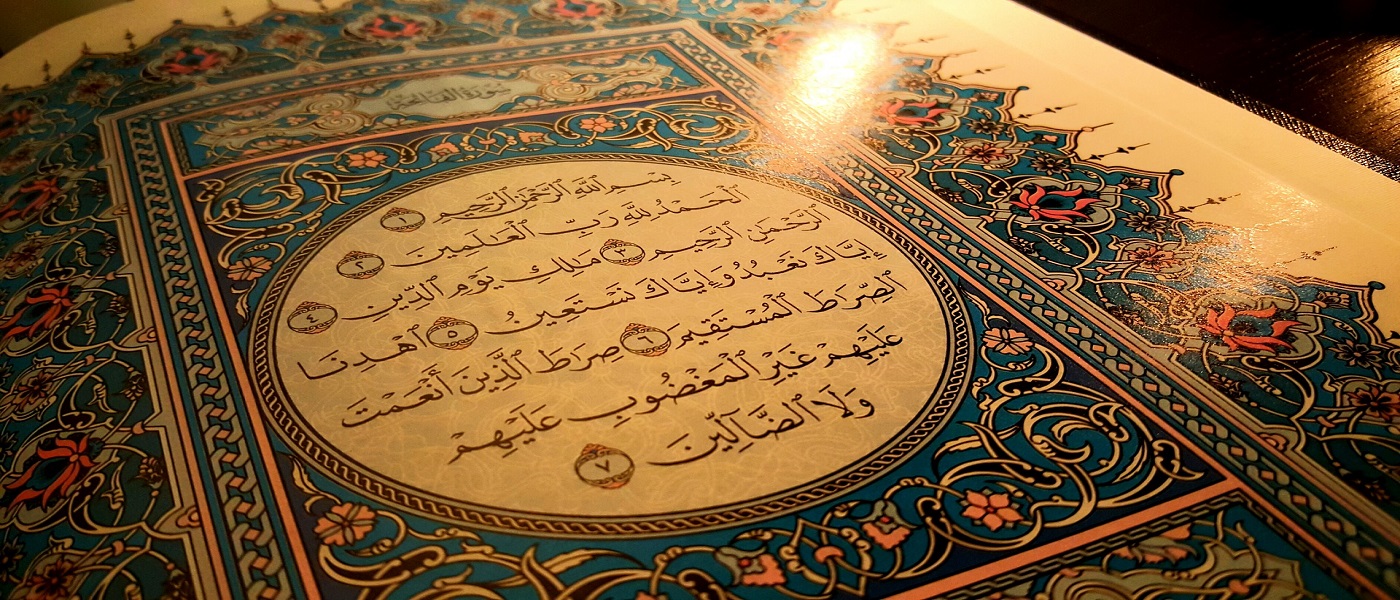

Is Music in Islam forbidden ?
Discussing the issue of music in Islam sounds a bit controversial. If we suppose that music is food for the soul, we cannot easily say if it is allowed (Halal) or not. Unlike the issue of meat in Islam that is precisely explained in the Holy Quran, the issue of music has never been mentioned in the Quran. However, we cannot say that because God has not directly spoken about music, therefore it is allowed (Halal) or forbidden (Haram). Because music is something that does exist in this world and God has not left us without guidance in such matters.
Since there is no explicit information about music in the Quran, people keep questioning if the music is allowed in Islam or not.
Therefore, the goal of this article is to explain the characteristics of lawful (Halal) and forbidden (Haram) music in Islam, based on the rulings from jurists.
What is Music in Islam?
In the description of the music, it is said that “Music is the technique of mixing sounds and voices in a pleasant way that makes the listener enjoy as well as making an internal revolution for his/her soul” [1].
To distinguish between lawful (Halal) and forbidden (Haram) music, it is easier to find out what forbidden (Haram) music is. Then any kind of music that does not include the characteristics of forbidden (Haram) music is lawful (Halal).
What is Forbidden (Haram) Music in Islam?
Before explaining forbidden (Haram) music, it is useful to get familiar with a few related phrases:
Mutrib music: a sort of music that causes impulsive movement for the listener.
Lahwi music: a sort of music that is common or suitable for frivolous gatherings and carouses.
Apart from these descriptions, and to provide a better conceptual understanding for the phrases above, we could say that mutrib or lahwi music is that which due to its characteristics keeps human beings away from Allah, and away from moral merits and drives them towards sinful acts and carelessness.
The forbidden (Haram) type of music is suitable for dissolute gatherings of sin. Any music which is lahwi and mutrib in the common view is forbidden (Haram). Distinguishing the subject of this ruling depends on the view of each religiously responsible individual (mukallaf ), and there is no objection to listening to a song if it is distinguished as Halal; keeping in mind that the personality of the musician, the vocalized words accompanying the music, the venue, and all other circumstances may contribute to placing it in the category of forbidden (Haram), lahwi, mutrib music, or another forbidden (Haram) category; e.g., if the music, due to the mentioned things, leads to certain corruptions [2].
We Should Recognize Which Music Is Forbidden (Haram) for Us
In the controversial case of music, it is up to the Muslim person to realize if the music he/ she is listening to is forbidden (Haram) or not.
When we want to listen to a song we should see:
If it is mutrib music (immaterial)
If it is lahwi music and suitable for carouses (Irrespective of whether it contains the element of excitement or engenders in the listener a state of melancholy and crying.)
If it contains ghina in its singing
If it contains vain and useless concepts that create distance between God and us.
For example, the musician may disagree with the listener’s point of view. In this case, what the Muslim person regards as lahwi and suitable for gatherings of sin is forbidden (Haram) for him to listen to. As for the sounds which fall in a grey area, the ruling in their regard is that it is permissible to listen to them [3].
What is Lawful (Halal) Music in Islam?
Any music that does not include the above characteristics is lawful (Halal), and there is no objection to listening to such music in Islam.
Using Musical Instruments
There is no objection in using musical instruments to play non-lahwi tunes if it is for revolutionary or religious chanting or carrying out useful cultural and other programs aiming at rational and lawful (Halal) purposes, provided that it results in no bad consequences.
At the same time, using musical instruments to play lahwi and /or mutrib tunes is not permissible [4].
Learning Music in Islam
Learning and teaching music for the above-mentioned causes are allowed (If it is for revolutionary or religious chanting or carrying out useful cultural and other programs aiming at rational and lawful (Halal) purposes).
Musical instruments which, according to the common view, are of dual - lawful (Halal) and forbidden (Haram) - purposes can be used in a non-lahwi manner for lawful (Halal) purposes. Instruments, which the common view regards as special to the production of lahwi music, are not permissible to use [5].
Teaching music
Also, in itself, there is no problem in teaching and learning music for the purposes mentioned above [6].
Trading Musical Instruments
There is no problem in buying and selling musical instruments that serve dual purposes [i], intending to use them in playing non-lahwi tunes.
Accordingly, it is not permissible to buy, sell, or distribute CDs that contain mutrib and/ or lahwi music that is suitable for gatherings of carouse, regardless of the language it is composed in or the country of origin [7].
Working as a Musician
There is no harm in the use of musical instruments to play tunes for revolutionary chanting, national anthems, or any other lawful (Halal) and useful pursuit provided that it does not entail rapture and frivolity suitable for the gatherings of carouse and falsehood.
But with regards to singing with music, the musician should make sure that the music will not be accompanied by ghina [8].
Conclusion
Therefore, any type of music that is branded for gatherings of carouse is forbidden (Haram), even if it does not arouse sexual temptation. As a result, any kind of music that is not common for such gatherings is lawful (Halal), such as martial music.
Making these types of lawful (Halal) music for the use of Muslims and for the improvement of the community, or for spreading good values is lawful (Halal).
Overall, any kind of music that creates a distance between the soul and God is forbidden (Haram).
Notes:
[i] Musical instruments are divided into two groups; 1- specific instruments, 2- dual-purpose instruments. The first group is those instruments that are known to be specifically used in carouse gatherings, while dual-purpose instruments are those which can be used for both lawful (Halal) and forbidden (Haram) purposes. Most jurists have named a few instruments as dual-purpose instruments such as a chime, drum, piano, dulcimer, etc. but in the case of specific instruments, they have not named any and have left the recognition to the Muslim person [9].
References:
- Rouhollah Khaleghi, An overview on music, p.4
- http://www.leader.ir/en/book/23?sn=5708
- ibid
- ibid
- ibid
- ibid
- ibid
- ibid
- music in Islam
Share This Article

How Can I Understand the Quran Better?
No matter if you were born a Muslim or you’ve just converted to Islam; understanding the Quran may be hard for you, because the Holy Quran, unlike any other books, is not classified in chronological or in subject order. You can see that in many cases Quranic stories are repeated in different chapters with slight differences. And when you start reading one chapter, you realize that the topic changes from one point to another. You may think that there are many sudden transitions in the Quran that make understanding it much harder for you, especially if you don’t know Arabic language and you use a translation.
There are also some verses that have been revealed in specific contexts, and you may never understand the meaning or the wisdom behind that verse if you don’t know about the context. As well as translating the Quran into your language, using a dictionary, may not help you understand the whole concept of a verse or a chapter.
Here we are going to share some tips that you may find them useful in the way of understanding the holy Quran and therefore learning more from it.
Who Will Benefit from the Quran?
At the beginning of the Holy Quran, Allah mentions that this book about whose truth is no doubt will be a guide for pious people. [1] Those “who believe in the Unseen, maintain the prayer, and spend out of what We have provided for them; and who believe in what has been sent down to you and what was sent down before you, and are certain of the Hereafter. And who believe in what has been sent down to you and what was sent down before you, and are certain of the Hereafter.” (2: 2-4)
Here, God is enumerating the characteristics of those for whom the Quran will be guidance. It means that if a person does not have the above characteristics, he should not expect to be guided by the Quran. Therefore, one of the steps of understanding the Quran is to discover and obey its basic rules and regulations.
“Indeed this Quran guides to what is most upright, and gives the good news to the faithful who do righteous deeds that there is a great reward for them.” (17: 9)
Allah’s Guidelines in Understanding the Quran
Before finding solutions on how to understand the Quran, we need to find out the probable reasons for which the Quran is a hard book for us. As mentioned in the Quran, Prophet Muhammad (PBUH) complains to Allah “O my Lord! Indeed my people consigned this Quran to oblivion.” (25: 30)
Hence, if one does not read at least a few verses of the Quran every day, he should not expect to comprehend its messages. However, for those who recite the Quran and are eager to grasp its insights, there are some instructions given by Allah.
1. Listen to the Quran carefully
“When the Quran is recited, listen to it and be silent, so you may receive [Allah’s] mercy.” (7: 204)
When you go to a classroom, and the teacher is describing something, you need to respect and adhere to the rules of the classroom. It is much more important to be polite and pious while we are being spoken to and taught by God. And as mentioned in the above verse, if we abide by the rules and be respectful, the real teacher of this world will start to teach us. Allah (SWT) promises in the Quran “Be wary of Allah and Allah will teach you, and Allah has knowledge of all things.” (2: 282) Allah enjoins his most faithful servants to ask Allah for knowledge. [2]
It is based on the same reason that Allah gives his pious servants knowledge and wisdom. “When he came of age, We gave him judgment and [sacred] knowledge, and thus do We reward the virtuous.” (12:22).
As you see in this verse, the requirement of gaining knowledge and wisdom from God is to be virtuous. Real knowledge and wisdom is not something that you can learn in any university or school or workshop. Wisdom is something given by God to His chosen people. And as mentioned at the beginning of this article, the chosen people who take the best benefits from the Quran are those who are pious, believe in the unseen, pray and give charity, and believe in all holy books. [3]
2. Read the Quran as much as you can
“…So recite as much of the Quran as is feasible...” (73: 20)
More important than listening to the Quran, is reciting it. In the above verse, God recommends us twice in one verse to recite the Quran as much as possible. This shows that even if we do not understand the real meanings behind the verses, the miraculous characteristics of the Quran will influence us. One of these characteristics as mentioned in the Quran is that when a person recites the Quran God will “draw a hidden curtain between you and those who do not believe in the Hereafter…” (17: 45- 46)
3. Think about the Quran While Reciting It
“Do they not contemplate the Quran?” (4:82)
Some people are very much concerned about reading a considerable number of verses every day. It is not condemnable as God Himself recommends us to do so. But let’s keep in mind that quality is sometimes more important than quantity.
Since the Quran was revealed to Prophet Muhammad (PBUH&HP) gradually, some faithless people were complaining why the Quran is not revealed to him at once. Allah (SWT) replied the reason: “So it was, that We may strengthen your heart with it, and We have recited it [to you] in a measured tone.” (25: 32)
Therefore, if we want to understand the Quran comprehensively, we should recite it gently, so that we can contemplate its verses.
What if you think and contemplate the Quran but still don’t understand it?
“… Ask the People of the Reminder if you do not know.” (21: 7)
God tells us to refer to people of wisdom and knowledge and ask them our questions if we cannot reach the answers by ourselves. With regards to Quranic questions, reading or listening to different interpretations of the Quran can be a great help. Different Quran interpreters have discovered different points about the meanings of Quranic verses.
The knowledge in interpretation of the Quran is limitless, and each commentator can find out some points about a verse, and there are still many points that have not been known. And it is one of the miraculous aspects of the Quran; that every individual may understand its points based on his/her conditions of time and place. That is why in Quranic interpretations there is always space for growth in understanding the meanings. Hence, do not stick to one interpretation and try to read and listen to different commentaries. Then you can compare them to each other, and at some points, with the help of Allah, you might find some new points about specific verses.
What if We Don’t Know Arabic?
“We did not send any apostle except with the language of his people so that he might make [Our messages] clear to them.” (14:4)
This verse shows that there should be many different reasons for which the Quran was revealed in the Arabic language; the most important reason is that Prophet Muhammad (PBUH&HP) was sent in a specific place and time and to people of a specific language. Perhaps it’s better for you to get familiar with Quranic Arabic which is not as hard as you think. Many of the words used in the Quran are repeated many times. This way you can start to memorize Quranic words that are most common, and gradually increase your knowledge of Quranic Arabic.
There is no problem in reading the translation of the Quran, as well as it is not a required condition for being a Muslim. But believe it or not, the joy of understanding the Quran in its real language is so different from reading the translation. It is like watching movies, with subtitles. We may understand the main points, but the real feeling is not conveyed to us.
Conclusion
In this article, we tried not to use any other sources other than the Quran itself to guide us in the way of understanding it.
"We send down in the Quran that which is a cure and mercy for the faithful, and it increases the wrongdoers only in loss.” (17: 82)
Therefore, as you try and read and obey the orders of Allah as mentioned above, make sure that He will reward your eagerness in understanding it by teaching it to you in a miraculous way.
References:
- The Quran (2:1)
- The Quran (20: 114)
- The Quran (2:1)
Read More

Is Cosmetic Surgery Allowed in Islam?
Being exposed to the ever-alluring representation of “A Perfect Body” in media through the picture of celebrities and actors, we inevitably grow more careful about our own body and try to compare ourselves with that unrealistic image that is made real for us. And the only remedy we find to get closer to that so-called norm is to change our appearances with the help of cosmetic surgeries.
Some people see a perfect correspondence between their physical features and inner confidence and instead of working on their inner abilities to elevate their character, try to make a better look. But there may be cases in which one is forced to undergo this kind of surgery out of necessity. What is Islam’s view about this matter on the whole? Are we allowed to have cosmetic surgeries or not? What are the conditions?
In what follows we will try to find the answers to these questions.
Islam’s View of Beauty
Beauty is a very relative concept and can at least be divided into two kinds: the beauty of the body vs. the beauty of the soul. In Islam, both of these aspects are given importance. However the latter is regarded as being superior to the former; Prophet Muhammad (PBUH&HP) says in a narration that, “Allah does not look at your faces but your hearts and deeds” [1].
The beauty of your character and the purity of your soul which is born with you and then can be elevated by following Allah’s guidance is far more valuable than your beautiful body. What gets you closer to Allah is your pious deeds, since: “…Indeed the noblest of you in the sight of Allah is the most God wary among you” (49:13).
Nevertheless, Islam is a religion that pays careful attention to the matter of personal hygiene and appearance. We have many narrations that emphasize this issue. For instance, Imam Sadeq (AS) always recommended his followers to “be neat and orderly, since Allah is beautiful and loves that which is beautifully provided that it is lawful (Halal)”[2].
As the best example of practicing Islamic teachings in its ideal form, prophet Muhammad (PBUH&HP) always appeared in his best shape both in society and at home and in this way showed Islam’s concern about the matter of appearance and outer beauty.
What Does Islam Say about Cosmetic Surgery?
Having said all of the above, the idea of beautifying yourself through cosmetic surgery remains unresolved. According to most Islamic jurists, having this kind of operation is not forbidden (Haram) in itself, provided that it is done for medical treatment such as removing a burn mark or curing a deformed part of the body [3].
However, undergoing cosmetics surgery just for the sake of beauty and without any purpose of medical treatment is only allowed if it is done by a doctor of the same gender since it is not out of necessity. This is because in Islam patients can refer to a doctor of the opposite gender, only when no same-gender doctor is available, or his proficiency is lower than a doctor of the opposite gender[3]. To have a better view of “Islamic Etiquette of Looking” as well as the matter of Mahrams, you can refer to the related articles.
Conclusion
It has been proved by many psychologists that having a better life, more often, is not related to your outward appearance; in other words, being beautiful does not necessarily make you happy. Instead, working on the inner beauty and elevating your soul leads you to a beautiful perception. However, this does not mean that Islam gives no importance to personal appearance and physical beauty. Prophet Muhammad (PBUH) always rejected the notion of abandoning worldly pleasures altogether in favor of a solitary and monastic lifestyle [i].
Notes:
[i] Prophet Muhammad (PBUH&HP) said: “ There is no monasticism in Islam” [4].
References:
- Mustadrak al Wassail, Vol 11, p. 264
- sul al Kafi , Vol 6 , p.442
- medical issue
- Na’aman Ibn Muhammad Tamimi Maqribi, Daaem Al-Islam, Egypt: Dar Almaaref ,Vol. 2, p.193
Read More

